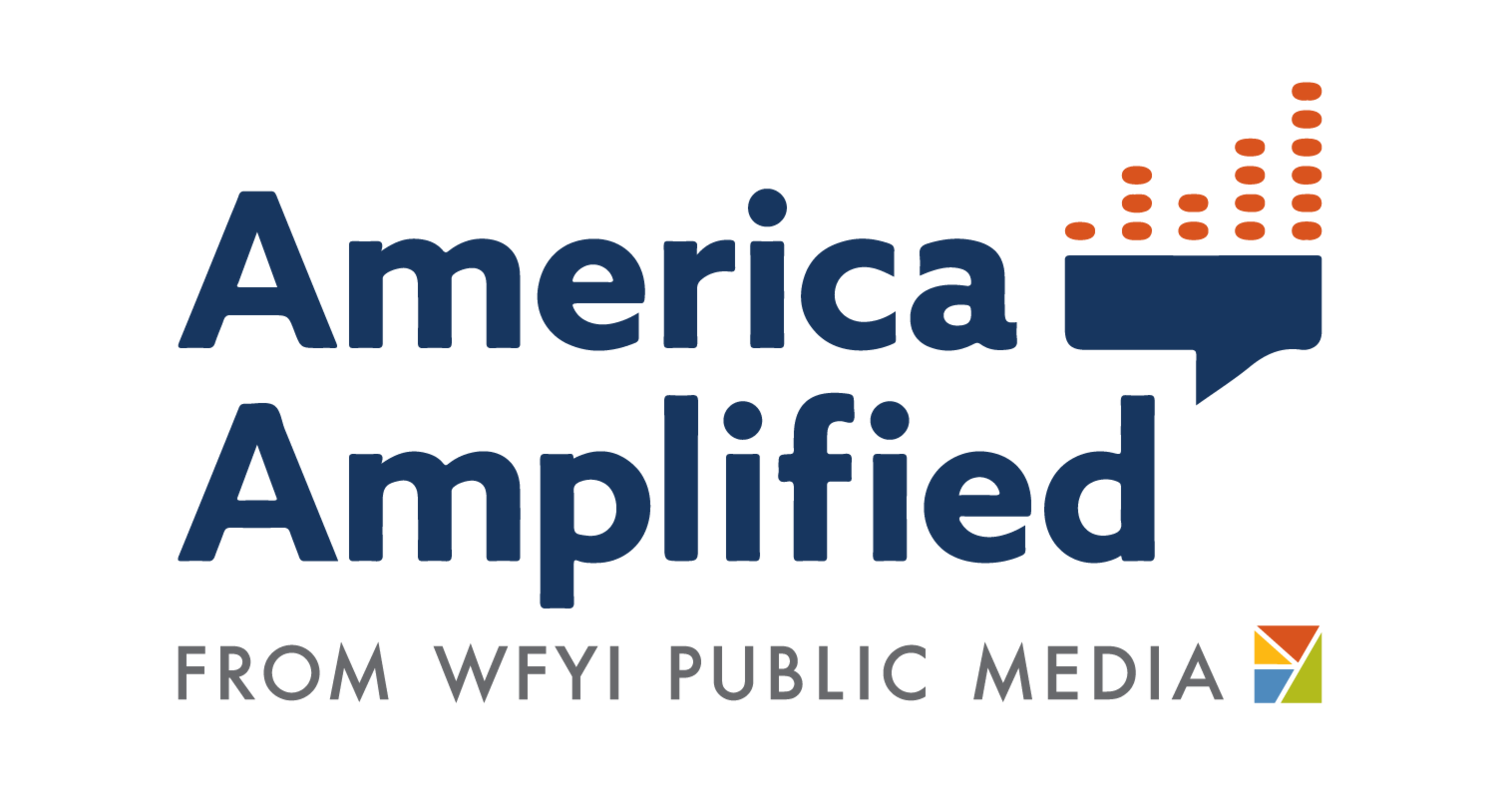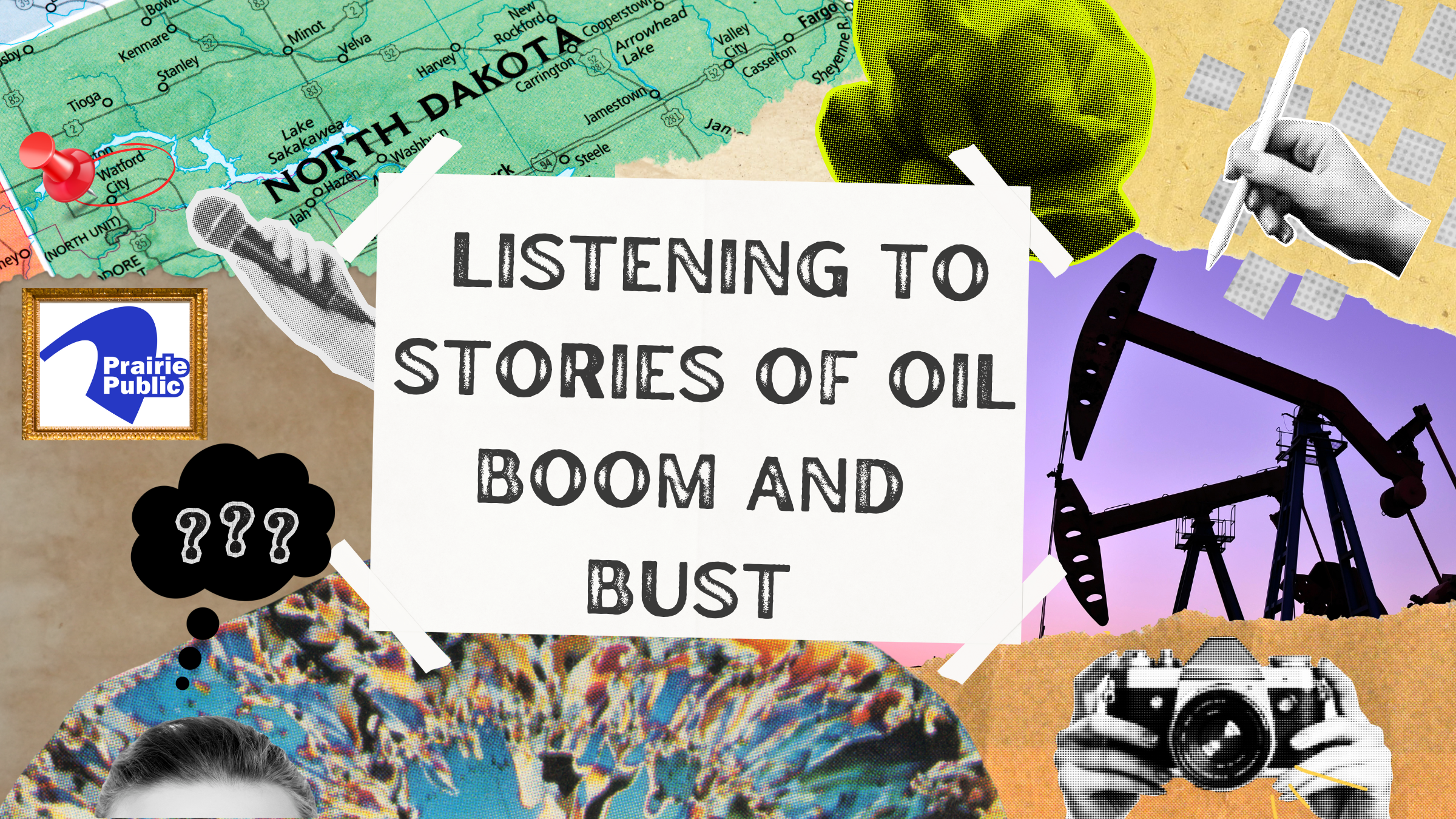Prairie Public listens for community stories amidst the boom and bust oil economy
Photo: Collage by Kateleigh Drumm / America Amplified
How a listening project changed editorial priorities for public broadcasting in North Dakota
Project Summary
Prairie Public Broadcasting travelled hundreds of miles several times in the last year to spend days listening – deeply, meaningfully – to a community in North Dakota that doesn’t get a lot of coverage or attention from the rest of the state: Watford City, a municipality of around 8,000 people in North Dakota’s northwest region. Watford City is one of several communities that experienced rapid growth, retraction and growth again because of the area's boom and bust oil industry, and as such, it’s an interesting blend of longtime residents and newcomers who hope they can stay. Ann Alquist, director of radio for Prairie Public, told America Amplified how their newsroom used community engagement to cover the housing troubles of people hoping to call Watford City home. This interview was condensed for clarity.
Objective
We wanted to elevate the stories of a community that gets very little attention and which was desperate for coverage. We wanted to really understand the people who live there and to meet them where they’re at, without making our own assumptions, and we wanted to introduce the Watford City community to the rest of the state.
From an organizational perspective, we also really wanted to build up our engagement muscle and shift our newsroom’s mindset toward engagement practices. Our prairie region covers a vast geography. Digital tools like Hearken have helped us close the gap, but showing up still mattered.
The Challenge
Watford City is far from North Dakota’s population centers – about three hours’ drive from Bismark, where our reporter Katie David is stationed. It took us a lot of time and effort to get out there. Thankfully, we had money from America Amplified to fund our mileage and hotel stays, which made that travel possible.
Once we were there, it was very easy to engage with the people who were longtime residents or deeply invested in the community. But our challenge was connecting with new residents. We went to lots of community events, including the rodeo, but we just weren’t organically finding the people we were looking for who could tell that newcomer side of the story.
The Solution
We made good relationships with the people who worked for McKenzie County. Their local government workers and service providers are the front line for helping new residents get settled. They know all the census data, who’s signing up for utilities, who’s enrolling in school. We connected with those workers and they sent us names and numbers. The town is so small that they know everyone. The Watford City community and business development coordinator was particularly helpful. She used to be the city’s workforce development director, so she knew a whole bunch of people who had recently moved to Watford City for work.
Through talking to people, the housing story quickly jumped to the top of our priorities. It wasn’t really a top-of-mind issue that got discussed during the election, but it was clearly a huge pain point for people in Watford City, where the high wages of oil workers drive up housing costs and leave behind school teachers, city employees and other essential workers. It’s to the point where the local healthcare system, McKenzie Health, got into the housing business themselves to help with recruiting and retaining workers. It’s a big story in a part of North Dakota that doesn’t get a lot of coverage or attention from the rest of the state.
The Takeaways
The community listening we did for the housing story showed us that “affordable housing” can mean different things in different communities. We have an idea of what “affordable housing” can look like in big urban centers, but Watford City isn’t like that. People making wages that would have allowed them to live and thrive elsewhere just couldn’t afford houses or apartments in Watford City because of the wealth gap created by the oil boom. Essential service workers like teachers and the government sector could afford $400k houses, but Watford City doesn’t have $400k houses; it has $600k houses. It was a market-specific problem making people housing poor. Really listening to people challenged our assumptions about what affordable housing meant in that market and made the story better.
The project also showed us that the engagement process doesn’t have to be pricey. We got $2,500 from America Amplified, which in the big scheme is not a lot of money, but it made all of our travel possible. Being able to physically be there to attend events like the rodeo signaled a commitment on our part to the community, to telling this story, and went a long way toward building trust. We hope to lean on that trust for future stories in Watford City. A lot of people have told us they’d like to see some coverage on veteran’s issues, so we’ve got our eye on that for the future.
Through our America Amplified partnership, we developed a strategy that was both digital engagement AND in person. We planned in advance, reached out to potential partners and community influencers, and created a new e-newsletter as a vehicle to showcase our election coverage. All of those activities made us realize that our engagement work could result in audience growth and build a bridge to a digital future that everyone agrees was necessary, but were uncertain how to go about it.
We’re now talking as a company across TV, radio, development and membership what the next initiative is for us to pursue to stay relevant and resilient. The conversations are lively and energizing across departments. This effort paved the way for us to row (plough?!) in the same direction as a community media institution.


